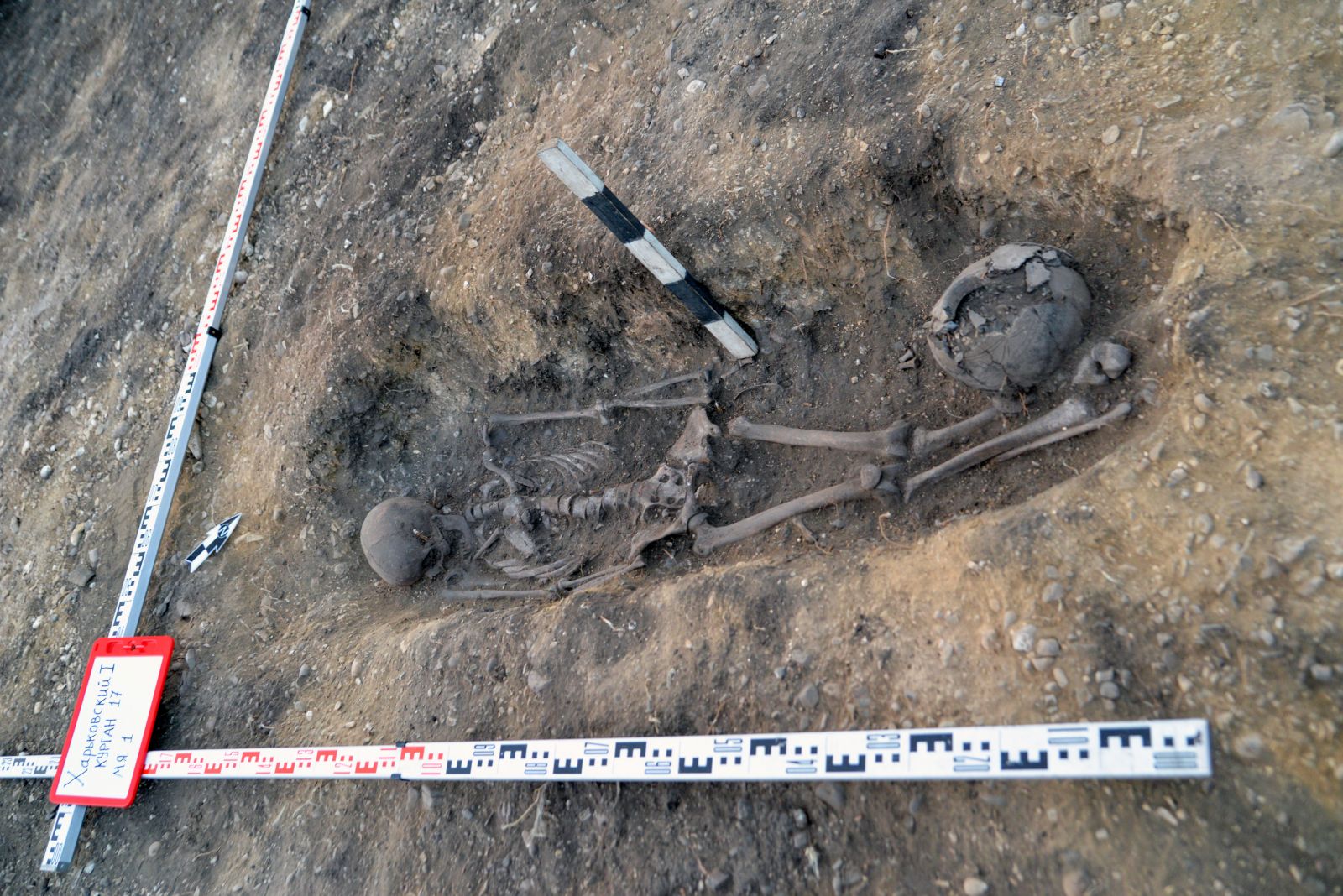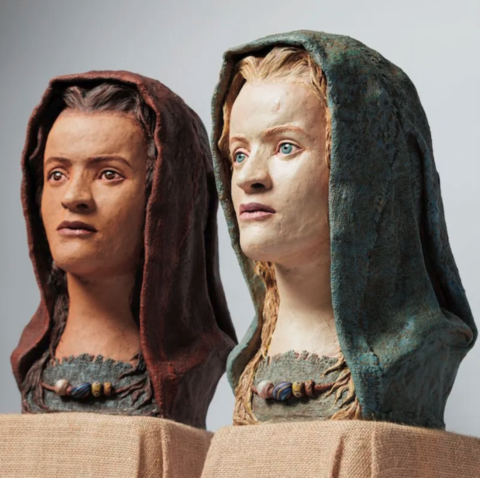At the excavations near the city of Magnitogorsk, SUSU archaeologists, in collaboration with the South Urals Foundation, discovered a unique-for-South Urals burial-mounds complex with an ancient tomb of a young woman. The remains were found during the excavations at Kharkovsky I ritual complex in autumn of 2022.
These burial mounds had been created in the steppe near the today’s Kharkovsky settlement, Chelyabinsk Region, approximately two thousand years ago. It is assumed that those had been arranged for ritual purposes by nomads of the Mid-Sarmatian epoch at the turn of eras. Probably, the earthen mounds had been used as places for practices of ritual worship, for instance, sacrifices – everywhere in such mounds archaeologists find small-cattle bones. However, these mounds, found by Aleksandr Tabakov and his daughter Anna (from Magnitogorsk) by accident in April of 2020, had been arranged in a certain order and were interpreted by SUSU archaeologists as a geoglyph. This term refers to a category of archaeological monuments that depict features on the surface of the earth. Such monuments are usually arranged from stones, trenches, or like in this case, using a sequence of burial mounds. This facility is unique because this geoglyph has become the first such archaeological monument in South Urals and the only one as of yet.
This ancient arrangement is a chain of 29 low-level (about 20 cm) earthen mounds forming a ring of around 70 metres in diameter with a split-entrance in its eastern part. The thirtieth and bigger mound is located beyond the ring. We can only guess what this ring of mounds had meant for ancient nomads, but it obviously had been of sacral significance.

Another, even greater lucky find awaited Chelyabinsk archaeologists at the excavation of this geoglyph. In one of the three randomly picked mounds they discovered an ancient tomb of some person, which contained an ornamented ceramic vessel placed by the feet of the skeleton. The scientists presume that placing of a pot with food or drinks in a tomb is part of the funeral ritual of the ancient nomads, who believed that the deceased must not “starve” in the afterlife.
Radiocarbon analysis helped suggest that this person had died around two thousand years ago, what corresponds to the Mid-Sarmatian period in the South Ural region (2nd century BC – 2nd century AD). Using the remains, the experts determined that it was a woman. Her height could be around 150 centimetres. The condition of teeth, healing of the cranial sutures and bone wear indicated to the fact that the buried woman could be 18 or 21 years of age. Perhaps, she had died after some illness, since there were no signs of death by violence found in the skeleton by the archaeologists.
In the area of the young woman’s neck the Chelyabinsk researchers found five fine crafted beads made of coloured glass. For one of these, the method of spinning and rolling had been used, what had given this piece of jewellery an intricate swirling ornament. This broken necklace, besides the clay pot, is the only object that remained preserved in the tomb of the Sarmatian beauty.
The woman had been buried in a pit thirty centimetres deep. Probably, after her death her body had been wrapped up in cloth – the “densely packed” skeleton is indicative of that. The beauty had been buried according to the “nomadic” tradition, popular in those days: stretched out body lying on the back. The head points towards south-west. Researchers will still need to find out whether this specifics of the funeral rite belongs to the Mid-Sarmatian tradition or not. And we can only debate on the young woman’s background and social status.
“Roughly speaking, we can assume that the status of a person is related to the number of valuable objects placed in his or her grave,” shared research fellow of the Eurasian Studies Research and Education Centre, Associate Professor of Department of International Relations, Political Science and Regional Studies and Department of Russian and International History of SUSU Ivan Grudochko. “Only a necklace of five beads and a ceramic pot were found near this young woman. It may seem that she had been poor since she had had nothing aside from these objects. However, as of yet we have no archaeological or historical information about what determined the status of the ancient nomads and their social rank in the society. And if we take into consideration the fact that they had arranged an individual burial mound at such a ritual place for their fellow tribeswoman, we could say that she had been not that low in her background and social status at all.”
.jpeg)
The economy and life necessities of the Sarmatians were based on pastoral nomadism, which means the yearly seasonal migration from the south to the north and back. It is difficult to say what exactly this girl had been doing for living. However, she had obviously been engaged in the cattle-breeding and nomadic style of life one way or another. The proof of that are the traces of spinal disc herniations or Schmorl's nodules, which had formed in the body of this ancient hard-working woman as a result of significant physical activity.
Anthropologist and researcher from Ufa Federal Research Centre of the Russian Academy of Sciences Aleksei Nechvaloda used the Gerasimov’s method for facial reconstruction of the Sarmatian woman based on the discovered skull. The colour of skin, hair and eyes in this case could vary since there is not enough accurate genetic data for determining the colour type of the ancient nomad woman.
As a result of studying the nomadic burial site, the experts took samples for radiocarbon dating, and they also conduct genetic examination, as well as pedological analysis for the research on the flora and climate of the South Urals steppe areas back in the beginning of the new era.
What other mysteries does the first South Urals geoglyph hide? Time will tell, along with the thorough archaeological examination of the remaining burial mounds. The bones of the discovered “Sarmatian” woman are currently being handled by the laboratory of the SUSU Eurasian Studies Research and Education Centre. Later they will be added to collection of the People and Technologies of the Urals University Museum of South Ural State University.




